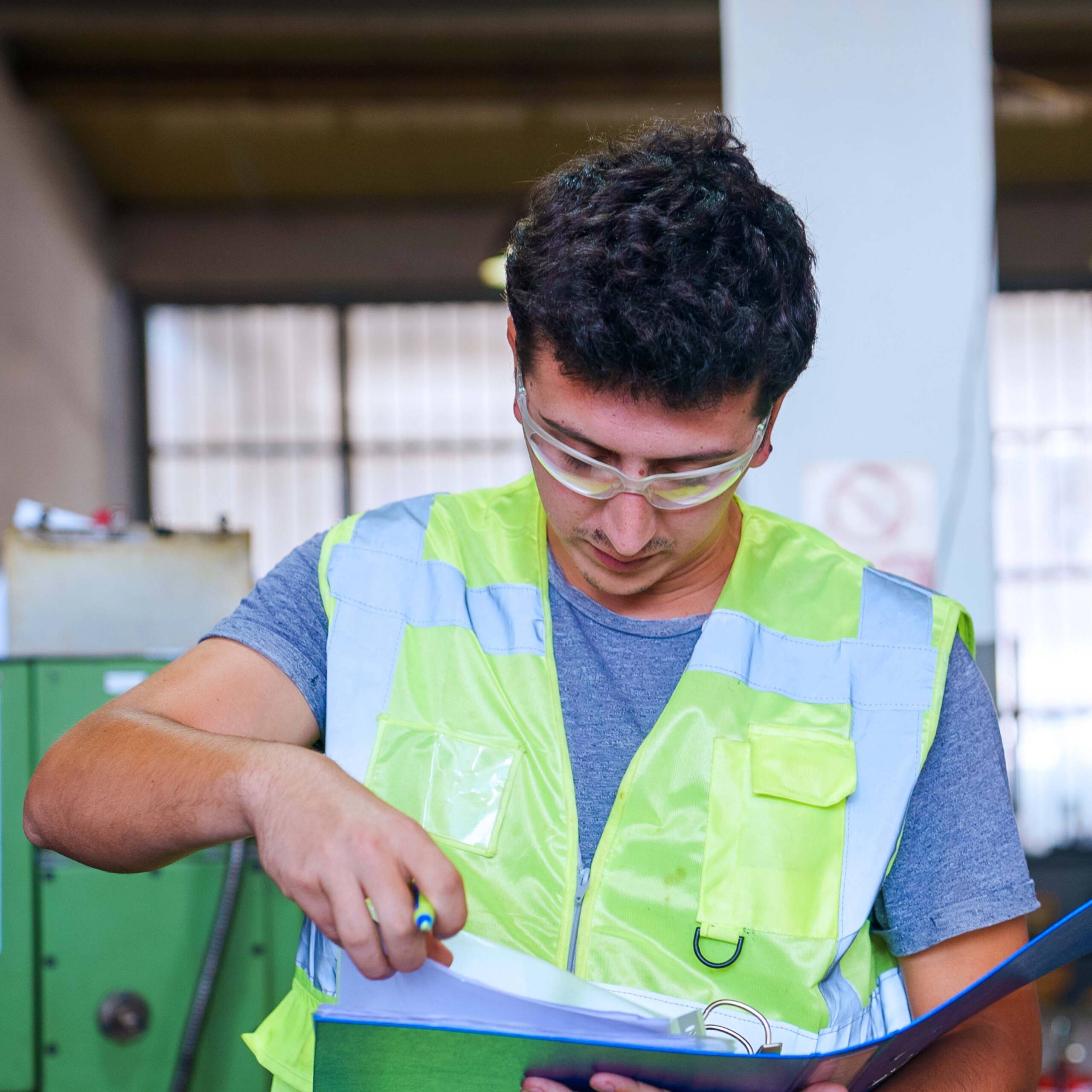Recent global events have made “global supply chain” a household term. But what does it all mean? We asked our very own Andrew Downard, Chief Supply Chain Officer, to explain the critical importance of the supply chain function in a global manufacturing company, give us a glimpse into his day-to-day role, and share his thoughts on Mativ’s supply chain journey.
Can you give us a quick introduction to who you are and your role here at Mativ?
Andrew Downard: I am one of the first Mativ employees, joining the company in the early days after our merger. But I actually started my career as a chemist. My curiosity about how to scale up products led me into operational excellence, then manufacturing, and eventually supply chain management.

At Mativ, I am responsible for our global supply chain – which I see as delivering the best quality products to our customers and employees in the most efficient manner possible. I commonly frame supply chain in terms of four strategic pillars: plan, source, make, and deliver.
The “plan” pillar is about understanding what products we are going to sell and then planning what we need to make or buy in order to sell those products. Purchasing raw materials as well as elements that don’t directly go into our products, like electricity and real estate, falls into the “source” pillar. The “make” pillar involves determining which of our global facilities will make what, and by when. Physically moving our product from our facility to our customer, is the “deliver” pillar. Making sure all four pillars work in harmony is key to strong supply chain management and my primary day-to-day focus.
What opportunities do mergers create for the supply chain function?
AD: In almost every merger, part of the deal thesis is that being a bigger company will help with negotiating better prices and therefore increase efficiency and profitability. Think about a commodity like corrugated cardboard. Pre-merger, each company, or even each manufacturing site, might have bought their own cardboard, one small order at a time. But when you add all those orders up, it turns out that collectively we spend a significant dollar amount annually on corrugated cardboard. As a combined organization, there is an opportunity to aggregate that spend and negotiate a better price.
That is perhaps the easiest possible example of the pure synergy that comes from just the aggregation of spend. But there are many other opportunities across the supply chain function to leverage the existing resources of the combined company to save money and drive value for the organization.
How would you describe Mativ’s supply chain journey?
AD: As a combined organization, we are still in the early days of our supply chain journey. For example, consider sales and operations planning (S&OP). Anytime you create a new company you are basically going back to the starting line with S&OP. To put that into context, think about setting sales goals. There is a tremendous amount of detail and cross-functional collaboration needed to get from a high-level sales target to determining which products to sell to which customer on which day, to working with our suppliers to purchase raw materials, to creating plans for our production facilities. As a new organization with new business units, we have to learn how to do that all over again.
In our first year as a combined company, we spent a lot of time making sure supply chain activities are orchestrated and set up in the right way to support our business ambitions. While all four supply chain pillars are important, in year one our biggest priorities were sourcing – realizing the savings opportunities from the merger, and planning – right-sizing our inventory levels. If you think of this phase of our journey as a 1,000-meter race, we are around the 250-meter mark. I am happy with where we are and the progress our supply chain team has made thus far, but we’ve got a lot left to do!
Our CEO Julie Schertell has mentioned in several interviews Mativ’s “global supply chain with local supply.” Can you elaborate on what this means?
AD: Most of our shipping points are in close geographic proximity to our customers. Not all, but more than most companies. This advantage is what we mean when we say, “our short local supply chain.” Our customers don’t have to pay a lot for transportation and they can receive products from us with a relatively short lead time.
Now when we talk about the raw materials and components coming into our facilities, that is the global supply chain part. Most manufacturers, including Mativ, generally have long supply chains bringing materials into our facilities. As an example, we buy pulp from several places around the world, like Canada, Australia, Brazil, or Indonesia. Any disruptions in our ability to get raw materials into our facilities can potentially impact the short local supply chain to our customer. As part of the sourcing pillar, my team works with our suppliers to make sure we get the right materials at the right price flowing into our facilities at the right time.
Speaking of your team, how would you describe your leadership style?
AD: One of my earliest decisions when I joined Mativ was to move fast, which complements nicely with our Make It Happen company value. The reason why I err on going faster is when I think back on both my professional and personal experiences, very rarely do I think “gosh, I wish I had gone slower.” More often than not, I think “I should have made that decision six months earlier!”
I understand that change, especially change that feels fast, can potentially wear on people. While we’re not going to slow down, it’s important that our supply chain team knows the impacts of the change and believe in the direction we are headed.
I also believe that collectively we know a lot more than we do individually. We have around 300 people in the supply chain organization. Any challenge or opportunity we encounter individually, or in specific location, more than likely has an answer that can be found within our team. That is why it’s important that we focus on collaboration across the business, ask questions, and communicate, communicate, communicate.
As Mativ approaches its one-year anniversary, are there any areas of success that you would like to highlight?
AD: As I said earlier, we are about a quarter of the way through our 1,000-meter race. I am really proud of the way the supply chain team has responded to the changes we have implemented over the past few months. Supply chain by nature is a cross-functional process. Our year one achievements in procurement as well as sales and operations planning are definitely a collaborative effort. There is also a tremendous potential in evaluating our supply chain data across the enterprise. To take advantage of this opportunity, this year we introduced our Business Process Owners who are looking at a specific element of supply chain, say supply chain analytics or transportation, in aggregate, not just at the business unit or facility level. It’s an exciting time to be part of supply chain at Mativ. I can’t wait to see what the future brings.
To learn more, listen to our Getting to Know podcast episode with Andrew Downard or follow Andrew on LinkedIn.


